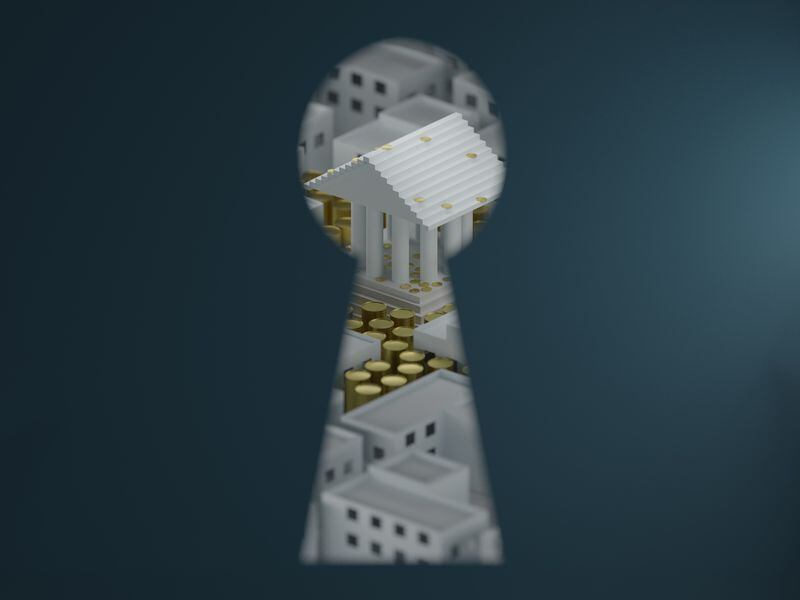The creation of a digital representation of assets via blockchain-based tokens is growing. In today’s issue, Herwig Konings from Security Token Market examines the growth of this industry and why tokenization matters.
In Ask an Expert, Carlos Domingo, CEO of Securitize, answers questions about why investors are looking at these assets in the current market.
You’re reading Crypto for Advisors, CoinDesk’s weekly newsletter that unpacks digital assets for financial advisors. Subscribe here to get it every Thursday.
Tokenized assets such as equities, bonds, funds, real estate, and asset-backed securities have attracted more attention this year than ever before. Known in the crypto world as “real world assets,” these RWAs are being explored by financial giants such as BlackRock, Hamilton Lane, JP Morgan, DTCC and Broadridge as their operational efficiencies and different return profiles continue to emerge.
What does it mean to be tokenized? Leveraging blockchain technology, these RWA tokens are digital representations of financial instruments like those stated above. Unlike crypto, these digital assets follow applicable securities laws worldwide. They run on regulated platforms while tapping decentralized finance (DeFi) applications for enhanced performance and utility.
Examples of tokenized assets Security Token Market has seen come to market include pre-IPO company equity, resorts, wine and diamond funds and unique securities backed by bitcoin mining or liquidity events from a portfolio of companies. On the more traditional side, we’ve seen feeder funds such as Hamilton Lane’s Secondary Fund VI available on Securitize or liquidity products such as the BlackRock USD Institutional Liquidity Fund (BUIDL) and Franklin Templeton’s OnChain U.S. Government Money Fund (BENJI). Why liquidity products? Check out our piece for CoinDesk Crypto Long & Short.
Why bring traditional, large funds on-chain? Financial advisors may seek higher-performing assets to enhance client portfolios. However, such funds tend to have high investment minimums, for example, $5 million. What if your clients could participate at a fraction of that, say $20,000? More clients get to take advantage of attractive risk-adjusted returns, advisors can rebalance a bit more granularly, and issuers can manage their investors more easily, thanks to the power of blockchain. This holds true of many assets, allowing for portfolio customization especially in an era where the transfer of wealth exposes different asset allocation preferences and risk profiles. This includes younger generations eager to participate in crypto markets.
How do RWAs perform compared to crypto? Do they also see outrageous returns? The short answer is no, but they can help stabilize portfolios revolving around digital assets, unlock access to previously challenging asset classes to tap into, and bring utility to them, resulting in an evolving financial ecosystem.
Taking from STM’s RWA Securities Market Update – August 2024 report, a hypothetical security token bundle of all STM-tracked RWAs outperformed the CoinDesk 20 Index (CD20), closing August out up 3.03% versus the CD20’s 14.45% loss this month. How does this compare to past performance? The security token basket has remained mainly in the lower single-digit positive returns, whereas the CD20 has seen some months with similar performance and others with double-digit losses. This speaks to crypto’s volatile nature.
As noted in the previous edition of STM’s report, traditional markets saw a negative start to August 2024 amid the Nikkei’s crash, unemployment numbers, and fears of a US recession, among other catalysts. Crypto subsequently experienced that loss, working to recover throughout the month but ultimately coming back down. While some security tokens have also experienced losses, others saw significant growth ultimately helping the basket keep its positive performance. For additional information on RWAs, view our latest research report.
Q. The tokenized treasury market recently crossed $2B in total value locked (TVL). How do you see that market evolving?
The market will continue to grow at a high rate because there is still untapped potential in these tokenized treasuries. For example, in traditional finance, no one posts dollars as collateral. There’s $2 in treasuries for every dollar. In crypto it’s the other way around, with over $150B in stablecoins compared to $2B in treasuries. That makes no sense and is a dynamic that will eventually reverse. Large crypto institutions will begin to post a stable value fund, like a tokenized short-dated treasury that earns a yield for that institution, as collateral instead of a stablecoin where the yield goes to the issuer. Institutions are starting to utilize tokenized treasuries for their treasury management. There’s functionality that will be unlocked, which will increase the adoption and help the fund and the tokenized treasury market continue to grow.
Q. If the Fed adjusts interest rates this month as expected, how will the demand for tokenizing different asset classes potentially shift?
When interest rates are high, investors want to have their money in treasuries. If you’re earning 5% on your asset with no risk, why would you want to put it into a different, more illiquid asset that has yield but a much higher risk?
We expect interest rates to decrease over the next 12 to 18 months.
It’s important to remember that Interest rates are high and inflation is high too, so investors aren’t really earning the yield they think they’re earning because their dollars are being depreciated. When both rates and inflation come down, treasuries will still be valuable because it’s risk-free. Meanwhile, there will be demand for other fixed-income assets that are adjacent to treasuries on the risk curve. They offer higher yield and are still liquid, thus compensating for the drop in risk-free yields. Those types of asset classes, like private credit for example, will become the next trend in this tokenization wave.
Switzerland’s fourth largest bank, ZKB, offers retail clients the ability to buy and sell bitcoin and Ether.
State Street and Galaxy announced three new crypto funds this week.
Russian President told the Eastern Economic Forum that Russia had become a world leader in bitcoin mining in 2023.

